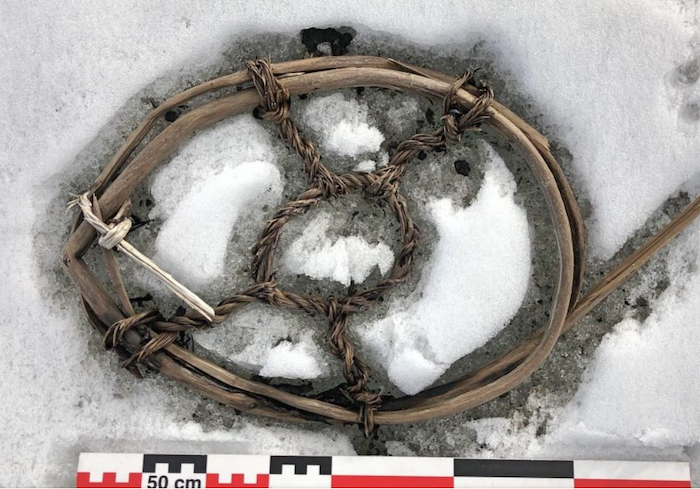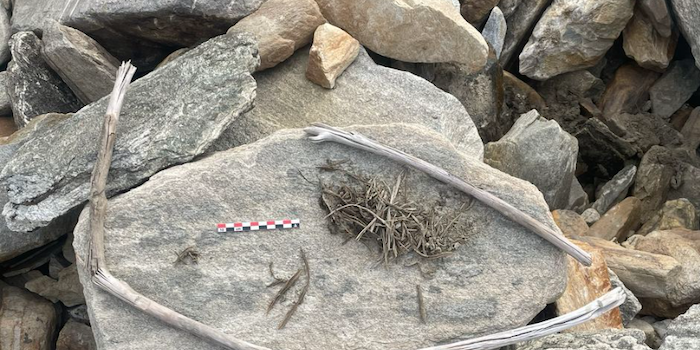
These images show the latest horseshoe discovery found in the Lendbreen Pass, Norway, by archaeologists. The snowshoe is said to be from circa AD 200 and is 50 cm. The top image shows remnants of a broken snowshoe found with leaf fodder. On the bottom is the snowshoe that was found in 2019. Images: Secrets of the Ice
Archaeologists are discovering more artifacts as the glacier over the Lendbreen Pass continues to recede in Oppland County, Norway.
Over the past week, archaeologists have come upon a handful of equine artifacts from circa AD 200. The finds include a snowshoe, iron horse bit, leaf fodder, medieval horseshoe and a viking knife. Although the remnants were not preserved very well archaeologists have determined that they have been in and out of ice throughout the years.
Archaeologists have documented their finds and posted them on Secrets of the Ice website. The latest snowshoe that was found is not in as good condition as a previous find.
“We found the complete shoe in 2019,” the archaeologists say, noting the remnants of leaf fodder were also found. “We looked at our earlier finds and found the remains of several less well-preserved snowshoes.”
In conjunction with the snowshoe, archaeologists found an iron horse bit nearby. The remnant is in good condition with parts of the leather bridle preserved. Researchers say that this remnant may be from the Viking era, but radiocarbon dating will determine its age.
“Until this year, we have mainly worked on the north side of the pass,” the archaeologists say. “There is not so much ice on the south side, but there is a gully filled with snow here, which we thought could have been used for easy walking in ancient times. This year, the snow in the gully has melted back and bingo!”
Just days later, leaf fodder from 1,000 years ago was found. The fodder was transported from the summer farms at Neto to the main farms in Skjåk through the Lendbreen Pass. Researchers say that this transport was equally as important as their findings, because it portrayed a bit of history.
“That's 20 km as the crow flies and included crossing the Lomseggen ridge at nearly 2000 m, possibly even in the wintertime,” archaeologists say. “They really must have needed that leaf fodder to get their animals through the long winter.”
More remnants have been recently discovered in 2023 at the pass, as two researchers found a medieval horseshoe and a Viking knife. This horseshoe appears to be related with the discovery of the bit, bridle and horseshoe that were found earlier, scientists say.
Horseshoes came into use in the 11th century in Norway, so it fits the archaeological timeline that these pieces are scattered around the area. It was an easier traveling ground for people and their horses.
Similarly, it is clear that the knife has been in and out of water many times, as it has not preserved well over time. Archaeologists say that the knife seems to be a part of the Viking age due to its shape. A lot of equine-related finds have been discovered in the Lendbreen ice patch including other medieval horseshoes, nails, manure and the bones from two packhorses. One of these sets dates to the 15th century, while the other is about 1,500 years old.









Post a comment
Report Abusive Comment